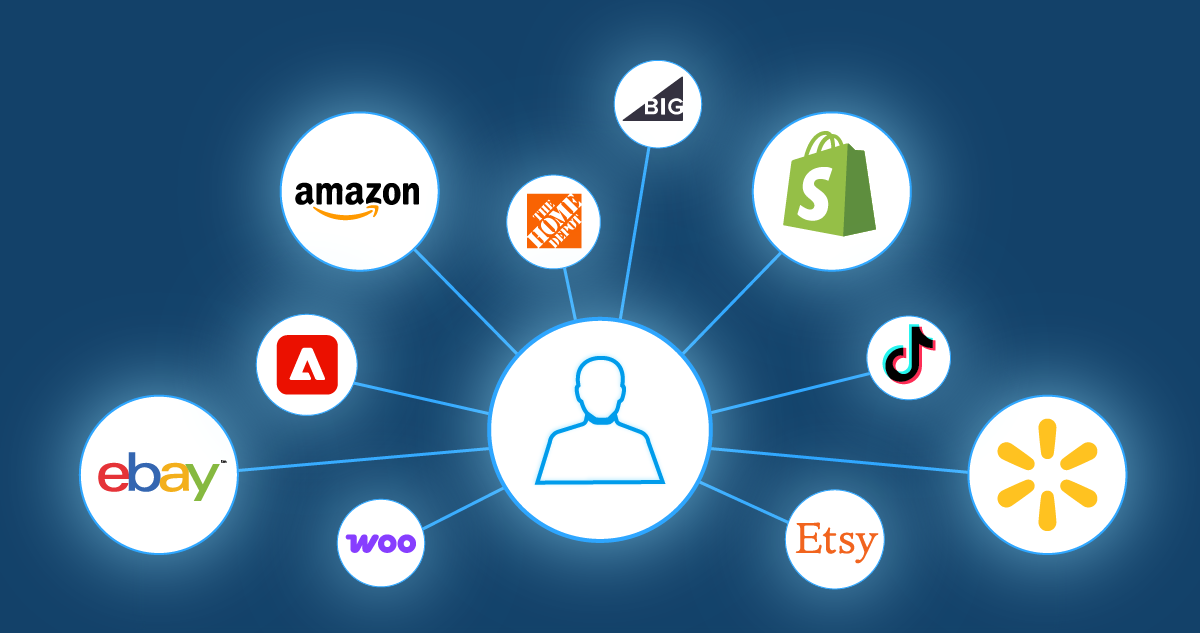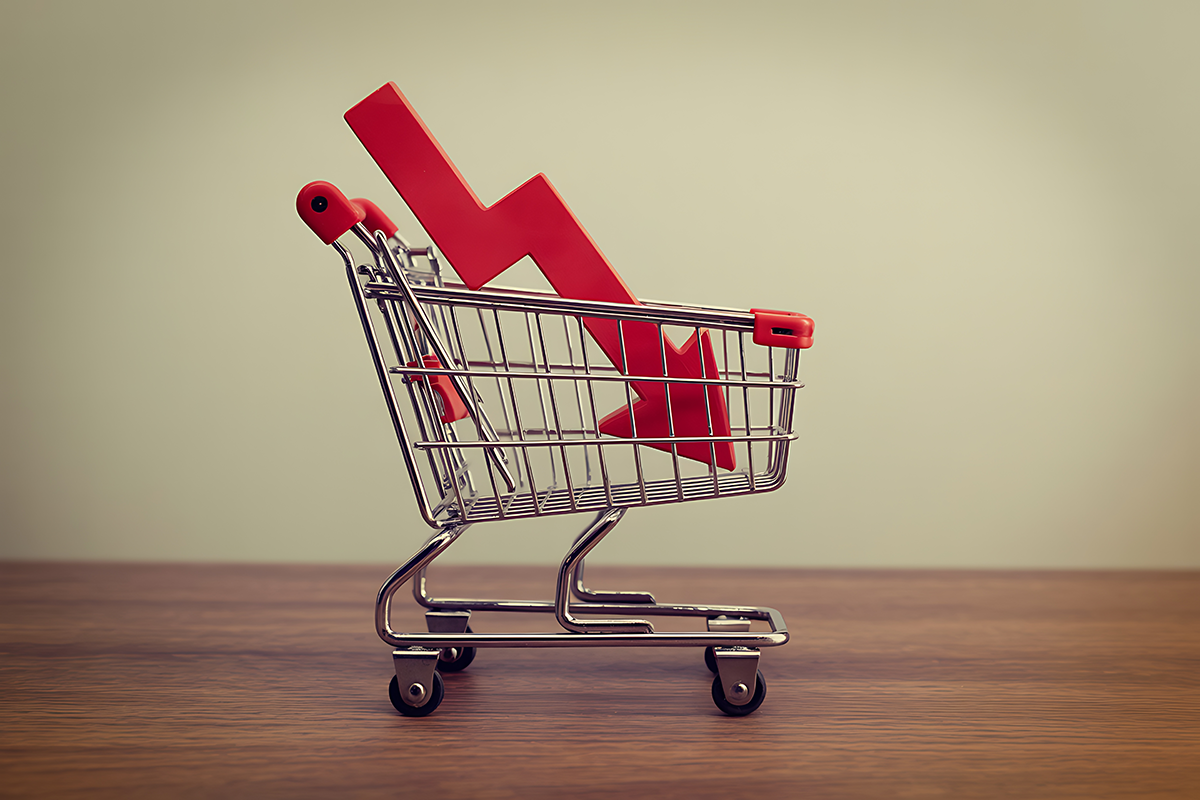Key takeaways
- Single-channel sellers face numerous challenges. Going multichannel can help.
- Expanding into new marketplaces makes DTC brands more agile.
- Without the right operational systems, expanding sales channels is risky.
- Descartes helps you scale multichannel operations without hiring more people.
Direct-to-consumer (D2C) ecommerce businesses currently face a chaotic, rapidly evolving, tech-saturated world. For many brands, sales are down, anxiety is rising, and leaders are looking for survival strategies. We need to increase revenue somehow or risk losing the brand we worked so hard to build.
As uncomfortable as this situation feels, pressure like this pushes us out of our comfort zone and toward new opportunities for growth. We get scrappy, creative, more resourceful. When a single sales channel can’t hook enough revenue to feed our business, maybe it’s time to expand our market, to cast a wider net. And that’s exactly what multichannel ecommerce does.
What is multichannel ecommerce?

With multichannel ecommerce, you sell products across multiple online platforms, such as Amazon, eBay, Walmart, TikTok Shop, and your own website. Each sales channel functions independently, though you can easily centralize multichannel listings, orders, inventory, and fulfillment workflows with all-in-one ecommerce operations software.
On the upside, selling on multiple marketplaces helps you diversify risk and reach more customers. It gives you the flexibility to adapt as the market shifts, and the upfront costs are low.
The only major downside is the potential for operational issues. If your new sales channels spike order volumes, your warehouse may struggle to keep up until you have scalable systems in place.
Learn more about multichannel ecommerce
Why multichannel = survival now

To survive, your brand must continuously evolve. Multichannel ecommerce can give you the ability to adapt, stay competitive, and navigate market shifts. Like a fisherman casting a wide net to catch more fish, it extends your brand’s reach by diversifying across channels.
Here are five situations where multichannel makes the difference for DTC brand survival.
1. Sales are down on existing channels

It’s a tough market. If your brand exploded during the COVID-19 pandemic only to struggle with tariffs and inflation recently, you’re not alone. Subreddit r/ecommerce is buzzing with chatter about how bad it is and what to do:
“…I’m down 20%. This is my busy time of year, and it’s noticeably slower. I’ll be out of business soon if these tariffs don’t go away.”
As consumer spending slows, it’s crucial to expand your market.
Also, your brand may not appear to shoppers as frequently as it once did. Google algorithm changes and the trend toward AI-powered shopping can negatively impact organic traffic and discoverability. People may not see your site in search results.
How multichannel helps: Selling on multiple marketplaces expands your reach and visibility. Instead of solely relying on organic and paid traffic to your shopping website, leverage platform-based search features, algorithms, and marketing.
Adding a marketplace such as Amazon opens up a global market to help you heighten visibility, reach more people, and sell more.
2. AI feels overwhelming

The rise of Artificial Intelligence (AI)-powered shopping is challenging online sellers to adapt quickly or get left behind. The Darden Report says, “Consumers used to browse multiple sites when shopping online. Compare. Contemplate. Make a decision. But that’s changing rapidly.
Artificial intelligence is becoming a trusted advisor, a filter, and in many cases, the first voice they consult. Nearly 60% of consumers say they’ve used AI to help them shop.”
How multichannel helps: Popular online sales channels such as Shopify, Amazon, eBay, Walmart, and Etsy are racing to incorporate AI-assisted shopping into their platforms. By diversifying your sales channels to include multiple marketplaces, you can capitalize on the latest innovations without incorporating AI on your own website.
3. You’re losing business to social-savvy brands

As a DTC brand, if you’re not selling on social media shops, you’re missing a fast-growing market opportunity. How many of your competitors are already selling on TikTok, Instagram, and other trending platforms? According to Salesforce:
“…more than two-thirds (67%) of global shoppers have made a purchase through social media this year. With over 5 billion monthly active users on platforms like Instagram, Facebook, Snapchat, and TikTok, social commerce is rapidly evolving from simple ‘swipe up to shop’ links to sophisticated, AI-powered shopping experiences embedded directly within social platforms.”
How multichannel helps: Instead of losing business, you can shift toward social with your target audience. Are they shopping on TikTok? Add a TikTok shop and experiment with influencer marketing. If your brand goes viral, Descartes Peoplevox can help your warehouse keep up with high order volumes.
4. Your customers are anxious

We’re living in a high-anxiety world where money is tighter, and consumer buying behavior is trending toward bargain shopping online.
According to the McKinsey ConsumerWise Sentiment Survey of 25,000+ consumers in 18 global markets:
- People are spending more time alone and online.
- Over 90% of Chinese and US surveyed consumers shopped at an online-only retailer in the previous month; the same is true for over 80% of surveyed consumers in Germany and the United Kingdom.
- Rising prices continue to be the number one cause for concern among consumers across all 18 of the markets in the survey.
Where are these anxious consumers shopping? Statista.com says, “As of 2024, online marketplaces account for the largest share of online purchases worldwide. Leading the global ranking of online marketplaces in terms of traffic is Amazon.”
How multichannel helps: When you add marketplaces like Amazon to the mix, your brand can reach the largest share of online shoppers. Price-sensitive consumers who are comparison shopping on Amazon or Walmart.com may discover your products there.
5. You’re missing out on mobile-first shoppers

Consumers increasingly shop on mobile apps rather than browser-based sites. Statista.com says, “In 2025, smartphones accounted for nearly 80 percent of all retail website visits worldwide, and in turn, also generated the majority of online orders compared to desktops and tablets.” Mobile matters.
Where are single-channel DTC businesses losing customers? Slow-loading mobile sites and apps. If your shopping site takes too long to load, people will shop elsewhere. According to National Retail Solutions:
“…53% of online and mobile shoppers abandoning sites that take longer than 3 seconds to load.”
How multichannel helps: If you can’t provide an excellent mobile shopping experience, consider adding Amazon, Walmart, or Etsy to your sales channel mix. These ecommerce giants understand the stakes and continuously optimize their mobile apps. They compete with one another to provide the best shopping experience, and you can leverage their expertise in this arena.
Adapt, survive, and thrive

For brands in crisis, the idea of adding new sales channels may seem terrifying. You’re already barely hanging on, afraid of losing the business you worked so hard to build. But what if small, fear-based thinking is holding you back?
The companies that remain flexible and adaptable will survive. So, keep your head up, evolve with the times, and adopt a multichannel strategy where it makes sense. The best is yet to come.
Multichannel Ecommerce Guide
Descartes created a comprehensive guide to help businesses get started with multichannel ecommerce. Within it, you will find how-to steps, information about potential problems, software recommendations, and other valuable resources. Ready to cast the net wider?
Warehouse survival
One final note on DTC brand survival and business growth: When your brand overcomes this tough season and order volumes increase, your warehouse must be ready to handle it. Warehouse survival depends on scalable systems that can handle spikes in order volume without needing to hire more people.
Descartes specializes in helping DTC ecommerce brands scale warehouse operations, increase efficiency, and control costs. The Descartes Peoplevox warehouse management system is purpose-built for scale, and we’re here for you.
Ready to scale without sacrificing your warehouse? Talk to Us
